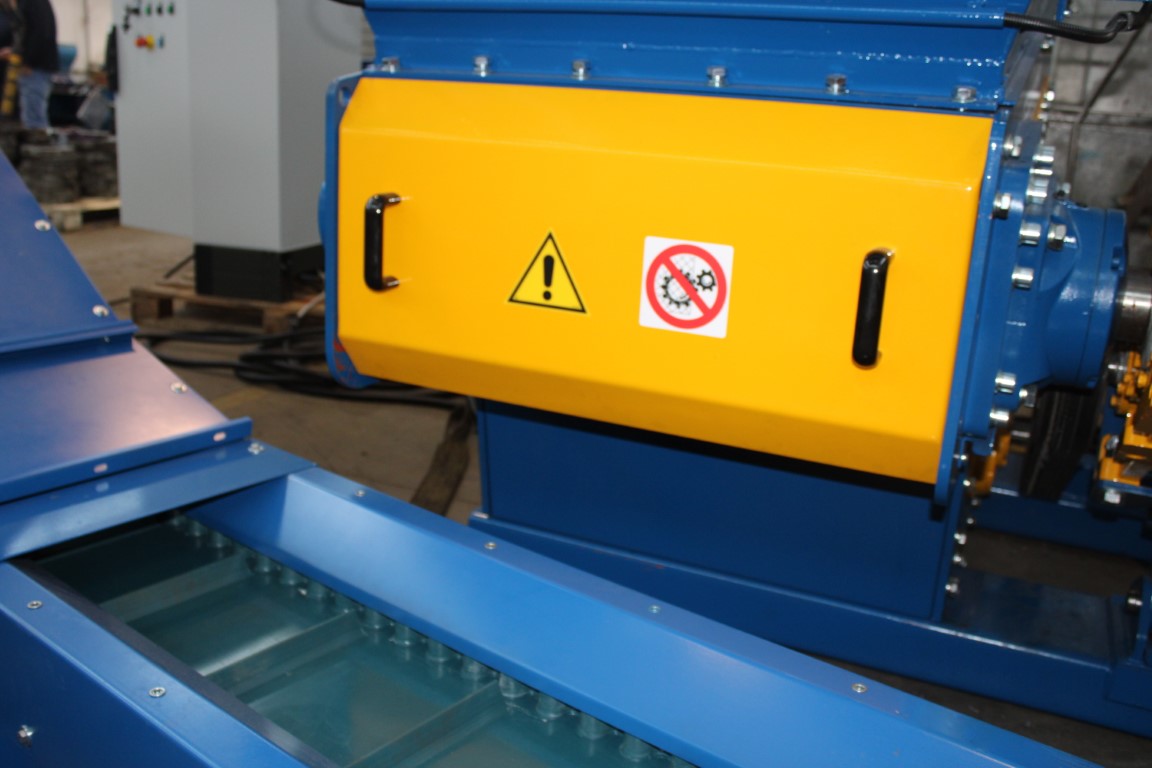
04 Nov Shredding alkaline batteries: a crucial step in recycling and waste management
Alkaline batteries are among the most common power sources for everyday electronic devices, such as remote controls, toys, and flashlights. However, once depleted, they become hazardous waste if improperly disposed of. Shredding alkaline batteries is a fundamental step in the recycling process, as it represents one of the first stages for material separation and resource recovery. Shredding not only breaks down the components but also facilitates the extraction of valuable materials, reducing environmental risks.
Composition of alkaline batteries
Alkaline batteries contain several recoverable materials, including zinc, manganese, steel, and graphite. Proper management of these materials requires an efficient shredding process to separate them safely and cost-effectively. Shredding has a dual purpose: reducing the size of batteries to facilitate subsequent mechanical treatment and isolating the various chemical components, many of which can be harmful if released into the environment.
The shredding process
Shredding alkaline batteries takes place in specialized facilities with machinery designed to break them into small pieces, separating the metallic parts from the chemical components. Typically, this process occurs in controlled environments to prevent the release of toxic dust and gases. Battery shredders are often equipped with filters and extraction systems to ensure that hazardous byproducts are captured and managed safely.
Once the batteries are shredded, the materials are separated for further treatment. Zinc and manganese, for instance, are collected for purification, while steel can be directly reused or sent to foundries for new products.
Challenges in shredding alkaline batteries
Shredding alkaline batteries presents various technical and operational challenges. First, the batteries are sealed in metallic casings that must be broken down without releasing the chemicals inside. Another obstacle is the variability in battery composition. Depending on the manufacturer and model, batteries may contain different quantities of materials, complicating the automated separation process.
SatrindTech has successfully addressed these challenges by providing a 22 kW single-shaft shredder with a material selection grid featuring 10 mm holes. The shredder was customized for a client by increasing the rotor width from 600 mm to 800 mm to boost hourly production.
Single-shaft shredders can be equipped with different plate sizes, defined according to the application, offering flexibility for processing various materials. Interchangeable grids with pre-selectable holes allow the appropriate final material size to be achieved.
The shredding line includes a loading conveyor and a discharge conveyor to transport the material to the next treatment and separation phase. For complete safety, the machine includes a dust and gas (VOC) extraction system to handle potentially hazardous emissions from the chemical components inside the batteries.
Benefits of shredding alkaline batteries
Despite operational challenges, shredding alkaline batteries offers numerous benefits. First, it reduces the overall waste volume, making transport and storage easier. Additionally, it allows for the recovery of significant percentages of valuable materials that can be reintegrated into the production cycle, reducing the need for virgin raw materials.
From an environmental perspective, shredding helps limit the release of hazardous chemicals into the environment. This process is critical to preventing soil and groundwater contamination, reducing the risk of negative impacts on human health and ecosystems.
Technological innovations
Technological innovation is playing a crucial role in improving the efficiency of shredding alkaline batteries. Recent developments include the use of robotics and advanced sensors to optimize the material separation process. Additionally, new low-temperature shredding systems are being tested, reducing the risk of gas emissions and enhancing overall safety.
Automation is also contributing to more efficient shredding. Highly automated plants are capable of processing larger volumes of batteries, lowering operational costs and increasing material recovery rates. These advancements offer new opportunities for the industry, making the treatment of alkaline batteries more sustainable and profitable.
Conclusion
For industry professionals, shredding alkaline batteries is a critical step in electronic waste management and the creation of a circular economy. While there are technical challenges, innovations in shredding are paving the way for more efficient and sustainable solutions.
The implementation of modern shredding plants, combined with policies promoting extended producer responsibility and differentiated collection, could significantly reduce the environmental impact of spent batteries, facilitating the recovery of valuable materials and contributing to a greener economy. Investing in advanced shredding technologies is a winning strategy for the industrial sector, turning an environmental problem into an opportunity for economic growth and sustainability.




Sorry, the comment form is closed at this time.